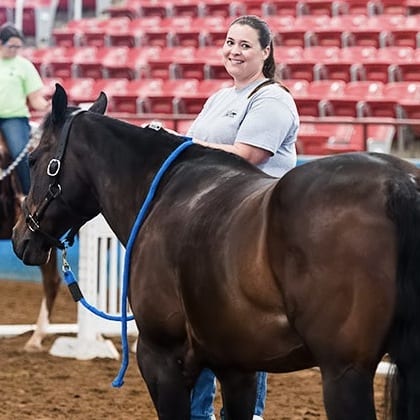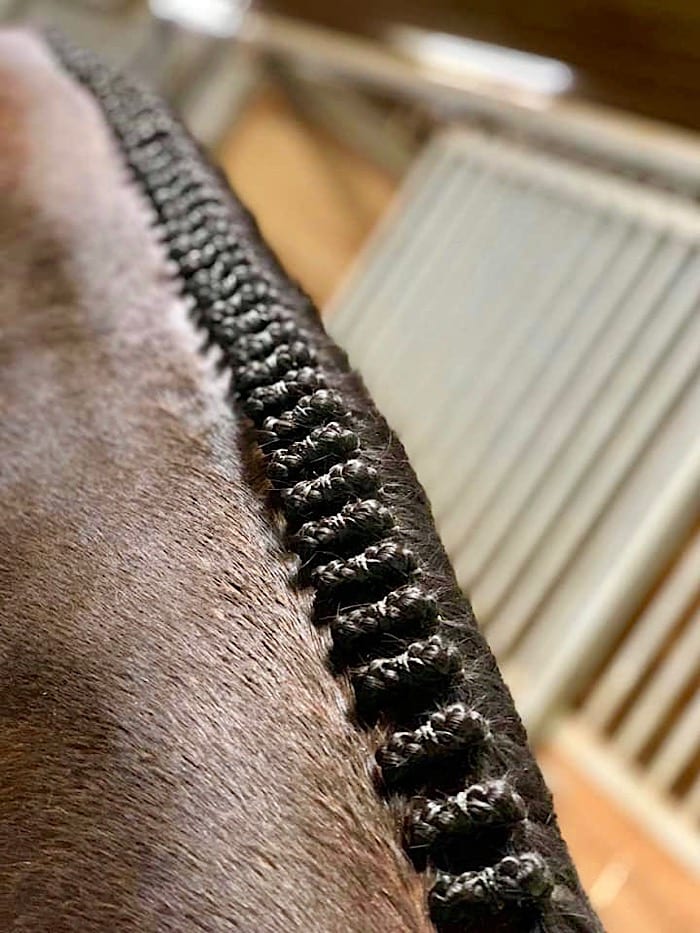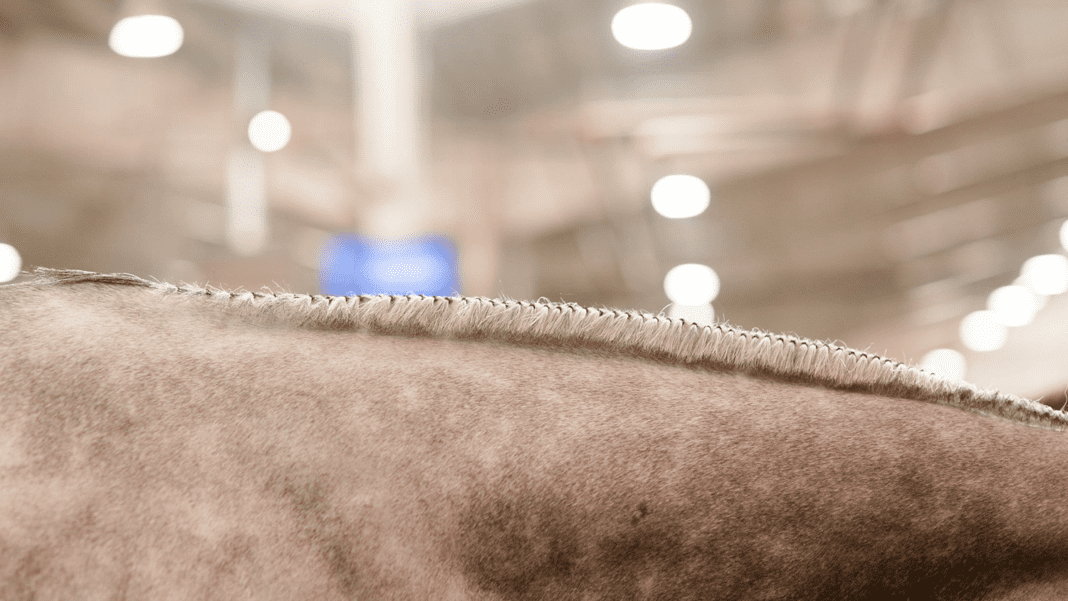Every horse show exhibitor knows that one of the most important things about going to a horse show is the grooming process.
In the horse show world, a beautifully banded or braided mane can make or break the overall image of the horse and rider.
Banders and braiders are an essential aspect of the horse show industry. Here are some tips to avoid your banders and braiders’ biggest pet peeves.
Prep and Prepare
Having your horse’s mane prepared before the bander/braider arrives is key to keeping them on schedule.
 Bander and braider Tina Buffkin of Knoxville, Tennessee, said one of her biggest pet peeves is when she walks into a stall, and the horse’s mane still has kinky hair from the braids being taken out.
Bander and braider Tina Buffkin of Knoxville, Tennessee, said one of her biggest pet peeves is when she walks into a stall, and the horse’s mane still has kinky hair from the braids being taken out.
Buffkin said it is much easier for her to make the bands look nice if the owner has wet and combed through the mane and allowed the hair to relax before she starts working on it. If the bander has to prepare the mane themselves, it adds time that can throw off their schedule.
Another common pet peeve of a bander/braider is putting conditioner or other products in the mane. Bander and braider Shawna Eisenhart of Sarasota, Florida, said a well-conditioned mane with products in it makes it very hard to grip the hair. Some exhibitors might think that a clean and conditioned mane might make the braids or bands look better, but Buffkin said it makes the hair slippery, so it is hard to get the bands as tight as they need to be.
 Finally, when preparing for your banding or braiding appointment, double-check that you have all of the supplies your bander/braider might need. Since braiders and banders often work at night, the horse owner or trainer is not always present when the horse is being banded or braided.
Finally, when preparing for your banding or braiding appointment, double-check that you have all of the supplies your bander/braider might need. Since braiders and banders often work at night, the horse owner or trainer is not always present when the horse is being banded or braided.
If this is the case, make sure to leave your halter, lead rope, slinky, and anything else they might need out where they can find them. Buffkin said a pet peeve of hers is when she has to dig to the bottom of a stall bag or fish things she needs out of a locked tack room.
Keep them Informed
Banders and braiders aren’t mind readers, and they have hundreds of clients. Remember to always keep them informed and up-to-date on any information they might need.
Make sure you tell them where your horse is stalled before the time of your appointment. This can also help them schedule clients, so they aren’t running back and forth between barns.
Another pet peeve Eisenhart mentioned is canceling at the last minute. Of course, some things happen that are out of your control that prevents you from coming to the show. However, if you know in advance that you will not need their services, immediately let them know so they can adjust their schedule.

If you need to add more horses, tell them as soon as possible. Asking a bander or braider to add three horses to their list at the last minute is not considerate and can adversely affect their other customers. It may not seem like a big deal to you at the time, but it adds an extra few hours of work to their schedule, and they have to be able to get everyone else done on time.
Pay on Time
Both Eisenhart and Buffkin said one of their biggest pet peeves of working as a bander and braider is not being paid on time. Horse shows are always hectic, and it is so easy to forget to leave the cash or check for your braider/bander. However, banding and braiding is a full-time job for most, so they are relying on your payment and expecting to have it at the time their service is done.
If you aren’t going to be at the stalls when your horse is being worked on, see if you can pay in advance or electronically. A lot of banders/braiders accept PayPal or Venmo. You can also leave the payment at the stalls in a place they can quickly access.
In the end, exhibitors love their banders and braiders and are very appreciative of their work. It is easy to get caught up and busy during a horse show, so don’t forget about thanking your braider and bander for a job well done.
Portions of this article originally published March 2020.








